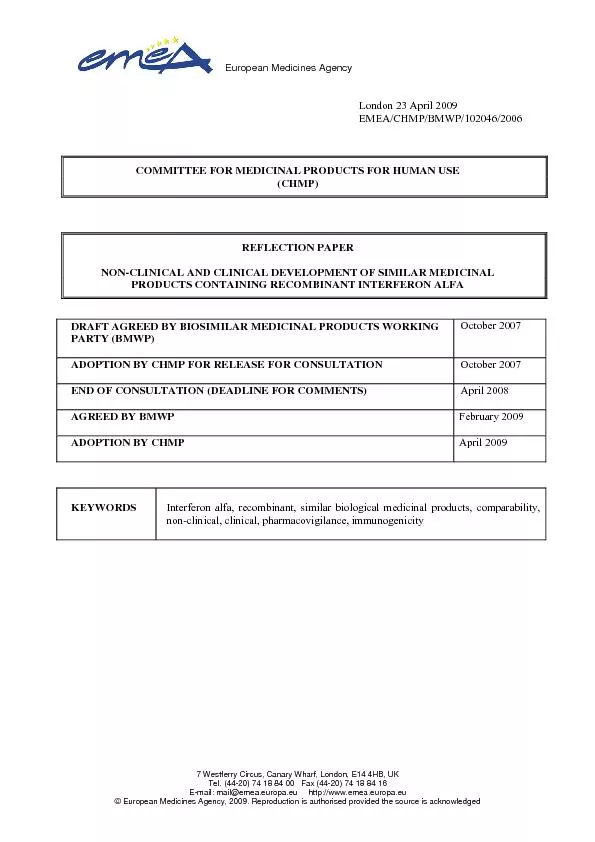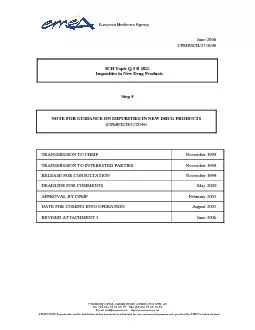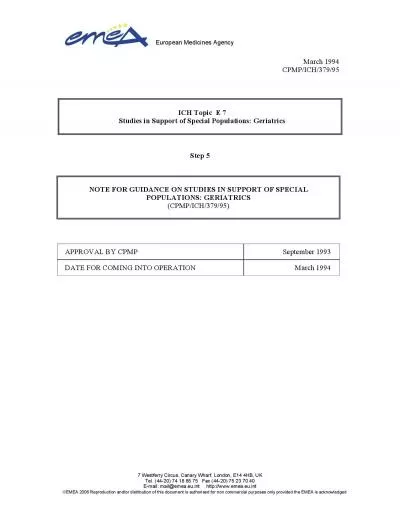PDF-European Medicines Agency 7 Westferry Circus, Canary Wharf, London, E1
Author : conchita-marotz | Published Date : 2016-06-27
CHMP GUIDELINE ON STRATEGIES TO IDENTIFY AND MITIGATE RISKS FOR FIRSTIN HUMAN CLINICAL TRIALS WITH INVESTIGATIONAL MEDICINAL PRODUCTS DRAFT AGREED BY CHMP EXPERT
Presentation Embed Code
Download Presentation
Download Presentation The PPT/PDF document "European Medicines Agency 7 Westferry Ci..." is the property of its rightful owner. Permission is granted to download and print the materials on this website for personal, non-commercial use only, and to display it on your personal computer provided you do not modify the materials and that you retain all copyright notices contained in the materials. By downloading content from our website, you accept the terms of this agreement.
European Medicines Agency 7 Westferry Circus, Canary Wharf, London, E1: Transcript
Download Rules Of Document
"European Medicines Agency 7 Westferry Circus, Canary Wharf, London, E1"The content belongs to its owner. You may download and print it for personal use, without modification, and keep all copyright notices. By downloading, you agree to these terms.
Related Documents














